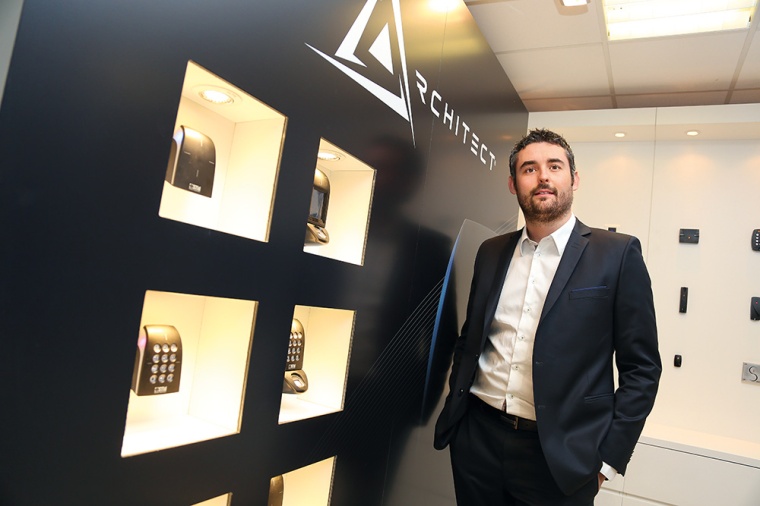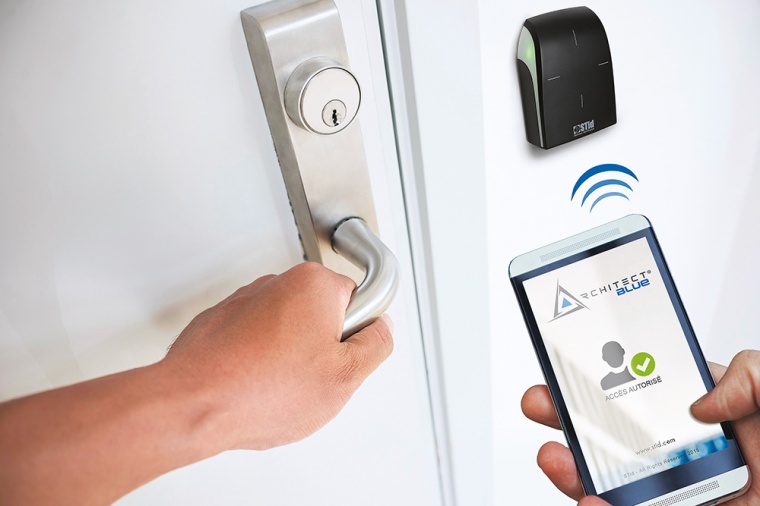STid’s Approach to Protect People, Goods and Data by Securing Identity and Access
RFID in security has become more than just the technical term that refers to all the latest contactless radiofrequency identification technologies. Guy Pluvinage was ahead of his t...


RFID in security has become more than just the technical term that refers to all the latest contactless radiofrequency identification technologies. Guy Pluvinage was ahead of his time in understanding the importance of this up-and-coming technology, when he established STid in 1996. The company’s mission is to design, manufacture and market readers and tags to be used for security and industrial track & trace solutions. These two fields have extremely demanding requirements and we had the opportunity to interview Vincent Dupart, Managing Director of STid, about how STid’s teams stand out from the competition and what they have developed.
GIT SECURITY: Could you introduce your company?
Vincent Dupart: STid is a French company with a worldwide reach that specializes in contactless Radio Frequency Identification technologies such as RFID, NFC and Bluetooth Smart. We have been inventing and providing solutions for more than 20 years. Our products are RFID readers and tags for the most demanding security and industrial asset tracking markets. We are now the French market leader in “high-security” access control solutions and are today expanding overseas, with subsidiaries in Mexico, the UK and Australia, as well as teams in Europe and North America that are growing. A key factor for success is to be close to our clients and partners, to provide them with support in choosing their access control system and in managing their technological migration issues.
The offering in this field is big. How do you distinguish yourselves from other vendors?
Vincent Dupart: As RFID pioneers, with 20 years of experience under our belt, we manage the entire RFID equipment design and manufacturing process. Innovation is a key part of our DNA, with a constant focus on technological research and the creation of added value for all parties in the value chain. We support and train companies, industries and governments in the protection of people, their sensitive data and assets.
Our solutions are developed using open, non-proprietary technologies. Our customers choose STid freely, not because they are forced to in any way. We offer all the tools that Chief Security Officers (CSOs) need to work independently in managing their security. The difference between us and our competitors is more than just our products – it’s a question of corporate culture and philosophy.
We also offer the most secure access control readers on the market – as certified by an independent body, the French Network and Information Security Agency (ANSSI). We were the first manufacturer to receive the ANSSI First Level Security Certification.
All our activities are based on a close relationship of trust with the clients we have been working with for 20 years, which is how we fulfill our mission – promoting trust and ease of use in the digital world.
Could you explain your innovation strategy in more details?
Vincent Dupart: We draw on this long expertise in designing smart, innovative products using cutting-edge technologies. The market has provided recognition of STid’s technological prowess. Examples include the Innovation Trophy awarded to our Architect range at the Expoprotection trade fair or the award that our Architect Blue range of RFID/NFC/Bluetooth readers won at the Security Meeting event last March. In 2015, we structured our innovation policy by creating a dedicated innovation team. It is our way of staying in touch with the market and new technologies, always with the aim of offering the highest levels of security, while making access control systems easy to use.
In concrete terms, we innovate to increase the added value provided by our products. Today’s access control readers are smart, upgradeable and multi-technology. Smartphones can now be used for these functions.
Which challenges and future trends do you see in the access control market?
Vincent Dupart: In our connected society, ensuring security in the access to corporate data and information has become a priority. But beyond economic issues, security is an issue for all, as recent tragic events have shown. Protecting people, by ensuing that their identity and access rights are secure, is now an absolute necessity. With increasing mobility in businesses, a technological revolution is underway, with interconnected resources. Access control is changing, with new uses and new equipment affected. Smartphones offer new ways of interacting with access control readers. Our Architect Blue and STid Mobile ID offerings already anticipated these trends.
Access control solutions need to be secure and user-friendly at the same time. How do you manage to get this done?
Vincent Dupart: In this context, STid is reinventing access control, to make it more intuitive for users, alongside the use of badges. To achieve large-scale roll-out of mobile solutions, the applications must be fun and user-friendly. For example, with STid Mobile ID, your smartphone can now be used to open the door to your office simply by tapping the phone or by using a hands-free function – and the smartphone is still in your pocket the whole time! With part of the security solution now in the smartphone, the technology and security aspects need to be very well managed. Mobile solutions need to demonstrate protection levels, based on recognized encryption methods that comply with government requirements. Confidence in the solution is a key factor for success. And again, depending on the level of security and independence the client is looking for, the solution may require tools for storing sensitive data on the user’s premises and not in a proprietary cloud system. We are the only company able to offer that today.
Could you describe how STid Mobile ID works in few words?
Vincent Dupart: STid Mobile ID has been developed with RFID, NFC and Bluetooth Smart technologies, bringing the access badge onto mobile terminals such as smartphones. It can work alongside, extend or replace traditional access badges. This virtual badge offers a range of intuitive and user-friendly methods that can be tailored to use in any situation – proximity or hands-free mode, “tap tap”, remote control, touch and more. With the Online application, a virtual badge can be sent instantly and securely to a remote user (visitor, new staff member) with an Android phone or iPhone. The Offline application can be used to create virtual badges, in the same way as conventional badges. The Online version will enable access rights to be managed in real-time by remotely sending access authorizations to a smartphone.
Business Partner

STid Electronic Identification - EMEA Headquarter20 Parc d’activités des Pradeaux
13850 Greasque
France
most read

GIT SECURITY AWARD 2026 - The winners have been announced!
GIT SECURITY AWARD 2026: The best safety and security solutions of the year - now an overview of all winners

When the Internet stumbles: Why DNS is important
When DNS fails, the internet stumbles-AWS outage proves resilience and redundancy are vital for digital trust


Assa Abloy's battery-powered Aperio KL100 secures lockers
Boost workplace security and operational flexibility by securing more than just doors.

Machine & plant safety: The winners of category A at the GIT SECURITY AWARD 2026
GIT SECURITY AWARD 2026: Machine & plant safety - an overview of the most innovative solutions








